Sept. 14…Day 2 of Cappadocia
In the Goreme Valley, where we ended our tour the first day, there are quite a few of the ancient caves that have been converted into boutique hotels and shops
. We had booked a room at the Harman Cave Hotel, for our one night in Cappadocia, and had a lovely room, with cave walls and a great view of the Valley. It was about a fifteen-minute walk down to the village where we had dinner in one of the charming outside restaurants and, then, did a little shopping in the cave shops that lined the streets.
We woke up, refreshed, filled our plates from the beautiful breakfast buffet that was included with the room and were, then, ready for another day of seeing wonderous sites in this land of fairy chimneys. At the end of yesterday's tour, Salim had told us that, much to our disappointment, we would have a different guide for the 2nd day. So, when the guide and driver arrived in the morning, we were pleased to see Salim rather than a new guide. As it turned out, it was Salim’s older brother, Fatih, who could have been his twin. Although Fatih wasn’t quite as personable as Salim, his English was just as good and he was a wealth of knowledge as he had studied the archeology and history of this region for many years at the University and was often hired by professional archeologists to guide them through the area on long expeditions in search of antiquities
.
We began this day’s tour with a visit to the Goreme Open-Air Museum, the most famous attraction in the Cappadocia region. The Open-Air Museum is a complex of medieval painted cave churches, carved out and decorated by the Orthodox monks between the years of 900 and 1200 AD and, in 1984, it became a member of the UNESCO World Heritage List and one of the first two UNESCO sites in Turkey.
Before starting to tour the individual churches, Fatih gave us a little history lesson telling us that, in the 4th century, Cappadocia became known as the "Land of the Three Saints" because of three remarkable theologians who are still collectively known as The Cappadocians. St. Basil the Great, his brother St. Gregory of Nyssa, and St. Gregory of Nazianzus contributed a great deal to Christian doctrine in general and Eastern Orthodox thought, in particular. St. Basil was instrumental in developing Christian monasticism, of which these cave churches in his homeland are a product
.
There are over 10 cave churches in the Goreme Open-Air Museum, each with a modern Turkish name, given by local villages based on a prominent feature. Along with rectories, dwellings, and a religious school, they form a large monastic complex carved out of a roughly ring-shaped rock formation in this otherworldly landscape of Cappadocia.
Most of the churches are fully painted inside with beautiful and historically important Byzantine murals that are in remarkably good condition, although nearly all the eyes of the painted figures have been gouged out by superstitious locals afraid of the Evil Eye. One notable exception is the Dark Church, so named for the little light that penetrates the interior. Fatih told us that The Dark Church was used as a pigeon house until the 1950’s and it took 14 years to scrape the pigeon droppings off the walls. Fortunately, the droppings acted to preserve the beautiful 11th-century frescoes underneath
. They have been recently restored and the paintings of New Testament scenes and other subjects are considered the best preserved frescoes in Cappadocia. Unfortunately, taking photos was not allowed inside the churches but, I was able to sneak a few, here and there.
Even though Fatih gave us a little history of each one before we went inside, it was really difficult to keep the different churches straight in our minds. But, of the seven that we visited, it was easy to marvel at the interior structures and the vibrant and well preserved frescoes. The last one we entered was the Buckle Church, the largest of the cave churches at Goreme with frescoes that have the riches colors and the most detail.
After touring the Goreme Open-Air Museum, Fatih took us to the old Hettite village of Avamos to visit a pottery factory. The Hittites were the first people to use a turning wheel to make ceramic pots and we watched a demonstration of the master potter building a vase using the foot driven potting wheel. Then…..I volunteered to try my hand at it. I can, now, totally understand why my sister, who has been taking pottery classes for some time now, is so hooked on throwing pots. Having done stone carving and clay sculpture when I was young, it felt so great to dig my hands into the clay and, I must admit, I didn’t do too badly for my first try at something I’ve wanted to do for a long time
. I only wish there was a pottery studio in Manzanillo where I could learn more. When we were finished with this part of the visit we were, of course, encouraged to wander about the showroom. The plates and bowls and vases, some that were huge, were really fabulous and we ended up buying a few small things that wouldn’t take up too much space in our luggage.
For lunch, Fatih took us to a beautiful home that had been built into a cave and had been converted to a restaurant. The front part was like a museum with antique furniture and pottery and other interesting items. I ordered Pottery Kebab, a dish only made in Cappadocia. It was a stew type dish served in a pottery container and was delicious. For dessert, we had the best baklava we’d ever tasted.
On our way to an old Greek village, we stopped at a little trinket shop on a hill overlooking a valley filled with pigeon houses. There was a pigeon coop behind the shop and we could see a few pigeons on one of the peaks but, for the most part, when the cave dwellings were abandoned, there was no one to feed the pigeons so they all but disappeared. Fatih told us about a 95 year old woman he knows that claims, when she was a young girl, the sky was so thick with pigeons that you couldn’t see the clouds.
We, then, made our way to an area that used to be an old Greek village and hiked up to the cluster of Greek Orthodox churches that were carved into the rock, one which is still in use today
. These carvings were slightly different from the others that we had seen but we weren’t able to get to the most interesting one, that was huge and covered with openings of different sizes, as the trail was unpassable.
Of the thousands of caves that covered the landscape of the Cappadocia region, a small percentage of the dwellings, Fatih told us, still belonged to individual families that had been passed down for hundreds of generations. We were able to see a few of them in the valley below where we were standing. Also, off in the distance, the peaks were covered with pigeon houses and I took an interesting close up photo of a cluster of them.
On our way to the airport, we stopped off at one last viewing area to see the "camel rock". It seems like, in all of our travels, we are always running into weddings and, low and behold, there was one happening right here. The bride and her dress were beautiful and I snapped a few shots of her and her groom. We gazed out, one final time, at the pillars and spires of this intriguing part of the world that we were so fortunate to witness and then headed back to the chaotic world of Istanbul.
DAY TWO - CAPPADOCIA
Wednesday, September 14, 2016
 Nevsehir, Cappadocia, Turkey
Nevsehir, Cappadocia, Turkey
Other Entries
-
26MORE SIGHTS TO SEE ON ROD'S BIRTHDAY
Aug 2124 days prior Vienna, Austriaphoto_camera24videocam 0comment 0
Vienna, Austriaphoto_camera24videocam 0comment 0 -
27OUR FINAL FULL DAY IN VIENNA
Aug 2223 days prior Vienna, Austriaphoto_camera16videocam 0comment 1
Vienna, Austriaphoto_camera16videocam 0comment 1 -
28A NEW ADVENTURE....A NEW COUNTRY
Aug 2322 days prior Yastrebets, Russian Federationphoto_camera47videocam 1comment 1
Yastrebets, Russian Federationphoto_camera47videocam 1comment 1 -
29NOW WE'RE IN ROMANIA...WE SURE GET AROUND
Aug 2619 days prior Brasov, Romaniaphoto_camera22videocam 0comment 4
Brasov, Romaniaphoto_camera22videocam 0comment 4 -
30WALKING TOUR IN BRASOV
Aug 2718 days prior Brasov, Romaniaphoto_camera18videocam 0comment 0
Brasov, Romaniaphoto_camera18videocam 0comment 0 -
31ALL I CAN SAY IS.....BIZARRE
Aug 2817 days prior Sacele, Romaniaphoto_camera18videocam 0comment 2
Sacele, Romaniaphoto_camera18videocam 0comment 2 -
32PHOTO JOURNAL OF OUR SACELE HOME EXCHANGE
Aug 2916 days prior Săcele, Romaniaphoto_camera18videocam 0comment 5
Săcele, Romaniaphoto_camera18videocam 0comment 5 -
33VISITING THE LOVELY TOWN OF SINAIA
Aug 3015 days prior Sinaia, Romaniaphoto_camera26videocam 0comment 1
Sinaia, Romaniaphoto_camera26videocam 0comment 1 -
34OCTOBERFEST, SIGHISOARA THEN THE BLACK SEA
Aug 3114 days prior Sighisoara, Romaniaphoto_camera39videocam 0comment 3
Sighisoara, Romaniaphoto_camera39videocam 0comment 3 -
35ANOTHER COUNTRY, ANOTHER HOME EXCHANGE
Sep 0212 days prior Kosharitsa, Bulgariaphoto_camera29videocam 0comment 2
Kosharitsa, Bulgariaphoto_camera29videocam 0comment 2 -
36THE ENCHANTING VILLAGE OF SOZOPOL
Sep 0410 days prior Sozopol, Bulgariaphoto_camera34videocam 0comment 4
Sozopol, Bulgariaphoto_camera34videocam 0comment 4 -
37WE'RE ON OUR OWN
Sep 068 days prior Sveti Vlas, Bulgariaphoto_camera12videocam 0comment 2
Sveti Vlas, Bulgariaphoto_camera12videocam 0comment 2 -
38LAST FEW DAYS IN EASTERN EUROPE
Sep 077 days prior Sveti Vlas, Bulgariaphoto_camera21videocam 0comment 6
Sveti Vlas, Bulgariaphoto_camera21videocam 0comment 6 -
39MYSTERY OF THE MISSING LUGGAGE
Sep 104 days prior Istanbul, Turkeyphoto_camera5videocam 0comment 1
Istanbul, Turkeyphoto_camera5videocam 0comment 1 -
40SENSORY OVERLOAD
Sep 113 days prior Istanbul, Turkeyphoto_camera31videocam 0comment 9
Istanbul, Turkeyphoto_camera31videocam 0comment 9 -
41TAKSIM SQUARE AND THE POTATO SEARCH
Sep 122 days prior Istanbul, Turkeyphoto_camera34videocam 0comment 3
Istanbul, Turkeyphoto_camera34videocam 0comment 3 -
42MAYBE THIS IS WHAT IT LOOKS LIKE ON THE MOON
Sep 131 day prior Nevsehir, Turkeyphoto_camera29videocam 1comment 6
Nevsehir, Turkeyphoto_camera29videocam 1comment 6 -
43DAY TWO - CAPPADOCIA
Sep 14 Nevsehir, Turkeyphoto_camera32videocam 0comment 5
Nevsehir, Turkeyphoto_camera32videocam 0comment 5 -
44LAST TWO DAYS IN ISTANBUL
Sep 151 day later Istanbul, Turkeyphoto_camera29videocam 0comment 3
Istanbul, Turkeyphoto_camera29videocam 0comment 3 -
45CAIRO AND OUR FABULOUS NILE RIVER CRUISE
Sep 173 days later Cairo, Egyptphoto_camera24videocam 0comment 5
Cairo, Egyptphoto_camera24videocam 0comment 5 -
46OUR NILE EXCURSION CONTINUES
Sep 195 days later Luxor, Egyptphoto_camera35videocam 0comment 6
Luxor, Egyptphoto_camera35videocam 0comment 6 -
47VALLEY OF THE KINGS
Sep 206 days later Luxor, Egyptphoto_camera34videocam 0comment 8
Luxor, Egyptphoto_camera34videocam 0comment 8 -
48EDFU AND KOM OMBO
Sep 217 days later Aswān, Egyptphoto_camera36videocam 0comment 5
Aswān, Egyptphoto_camera36videocam 0comment 5 -
49OUR LAST FULL DAY ON THE NILE EXCURSION
Sep 228 days later Aswān, Egyptphoto_camera32videocam 0comment 4
Aswān, Egyptphoto_camera32videocam 0comment 4 -
50THE AIRPORT FIASCO
Sep 239 days later Addis Ababa, Ethiopiaphoto_camera23videocam 0comment 4
Addis Ababa, Ethiopiaphoto_camera23videocam 0comment 4 -
51THE MESKEL FESTIVAL
Sep 2612 days later Addis Ababa, Ethiopiaphoto_camera29videocam 4comment 1
Addis Ababa, Ethiopiaphoto_camera29videocam 4comment 1 -
52THE ASTOUNDING CHURCHES OF LALIBELA
Sep 2814 days later Lalibela, Ethiopiaphoto_camera42videocam 0comment 2
Lalibela, Ethiopiaphoto_camera42videocam 0comment 2 -
53OUR NEW SON
Sep 2915 days later Lalibela, Ethiopiaphoto_camera39videocam 1comment 4
Lalibela, Ethiopiaphoto_camera39videocam 1comment 4 -
54BACK TO ADDIS ABABA
Sep 3016 days later Addis Ababa, Ethiopiaphoto_camera30videocam 3comment 2
Addis Ababa, Ethiopiaphoto_camera30videocam 3comment 2 -
55FINALLY.....THE ANIMALS!!!!
Oct 0319 days later Nairobi, Kenyaphoto_camera51videocam 2comment 6
Nairobi, Kenyaphoto_camera51videocam 2comment 6 -
56MORE SAFARI THEN BACK TO NAIROBI
Oct 06387 days later Lake Nakuru National Park, Kenyaphoto_camera35videocam 0comment 1
Lake Nakuru National Park, Kenyaphoto_camera35videocam 0comment 1 -
57FABULOUS HOME EXCHANGE IN DEBASO, KENYA
Oct 09390 days later Malindi, Kenyaphoto_camera29videocam 0comment 5
Malindi, Kenyaphoto_camera29videocam 0comment 5 -
58UNWINDING IN PARADISE
Oct 10391 days later Watamu, Kenyaphoto_camera25videocam 0comment 3
Watamu, Kenyaphoto_camera25videocam 0comment 3 -
59THE GEDI RUINS
Oct 12393 days later Gede, Kenyaphoto_camera12videocam 0comment 0
Gede, Kenyaphoto_camera12videocam 0comment 0
Comments
2025-05-22
Comment code: Ask author if the code is blank

 Nevsehir, Cappadocia, Turkey
Nevsehir, Cappadocia, Turkey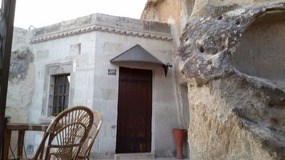
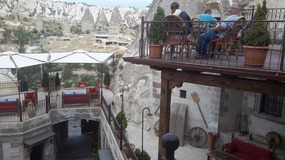
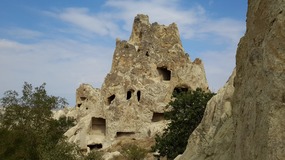

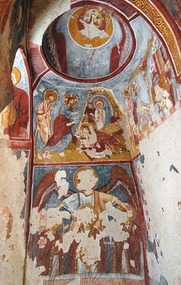
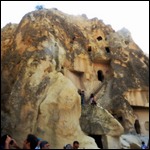








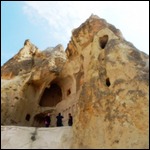
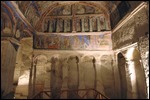


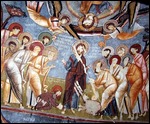





















Gary Hess
2016-11-03
Wow! Seems to be an 'other-worldly' place between pigeons and beautiful frescos. Very special.